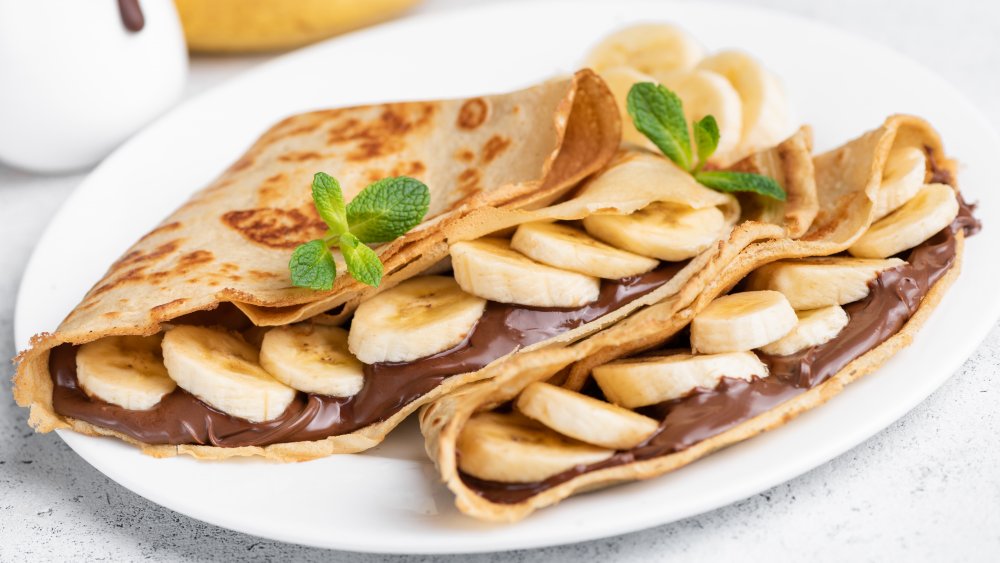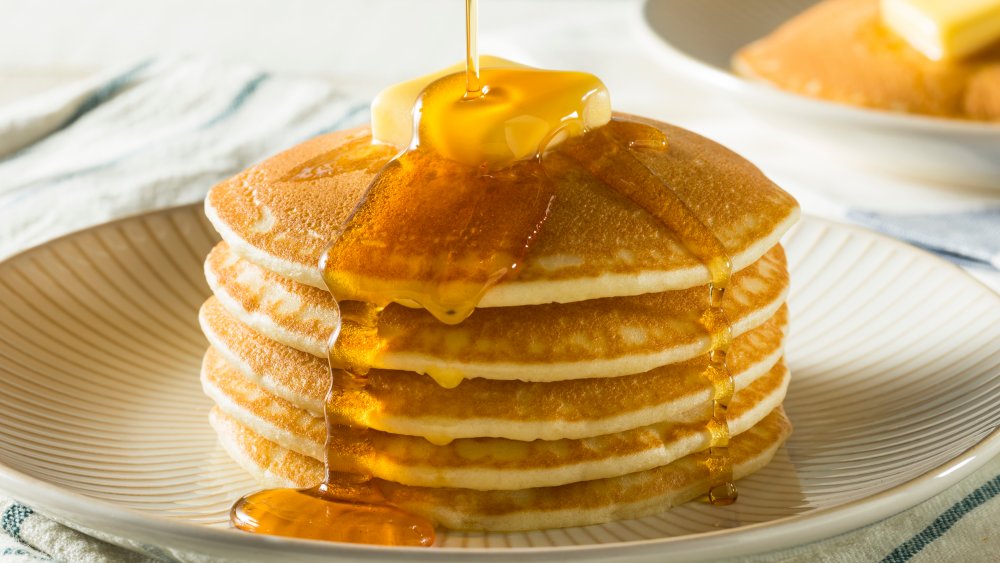The Real Difference Between Crepes And Pancakes
Many people believe crepes are simply France's version of pancakes, but diners unfamiliar with the two dishes would be in for a surprise if they ordered the French delicacy at a restaurant and were expecting a big, fluffy stack like the American breakfast food. While both dishes are made of similar ingredients, there are some huge differences between the two which lead to incredibly distinct results.
According to Eat This Not That!, crepes were originally made in Brittany (a western region of France) and eaten as part of dinner. The food was traditionally served plain and considered a bread, and then later made with savory ingredients stuffed inside, not sweet. Eventually, the region began experimenting with sweet fillings and using white flour instead of the buckwheat flour that savory crepes are usually made from, allowing the dish to be served for dessert as well.
While you can make crepes with a non-stick pan, cast iron skillets are more suitable for the food. There are even special pans specifically designed for making crepes, which Executive Chef Sebastien Rondier told the outlet many French families not only own, but make frequent use of, saying that in France crepes are a standard part of family gatherings.
Crepes are missing one key ingredient used to make pancakes
Chowhound states that there are a few differences between crepes and pancakes that make them easy to tell apart. While the two dishes do look similar to one another, the French flapjacks are much, much thinner than your standard American breakfast fare. This is because crepes are essentially made with the same ingredients as pancake batter with one major difference — crepe batter does not contain any raising agents. These ingredients (like baking powder or baking soda) are what give pancakes their signature height. Crepes are also generally larger than pancakes and usually rolled or folded and stuffed with their fillings, rather than just having them piled on top or mixed into the batter.
BBC Food says that another difference between the two dishes is how rich and silky crepes are. They state that this is achieved by the required resting time for crepe batter, which can be anywhere from one hour to a full day. The Kitchn shares the science behind why this resting time is considered essential for perfect crepes. During the waiting period between mixing up the batter and cooking your crepes, the starch molecules in the flour are able to absorb more of the liquid from the batter. This absorption causes the molecules to swell, resulting in a thicker batter. The resting time also allows the gluten in the flour time to relax and more of the air you mixed in to escape, which gives you delicate, chewy crepes.

